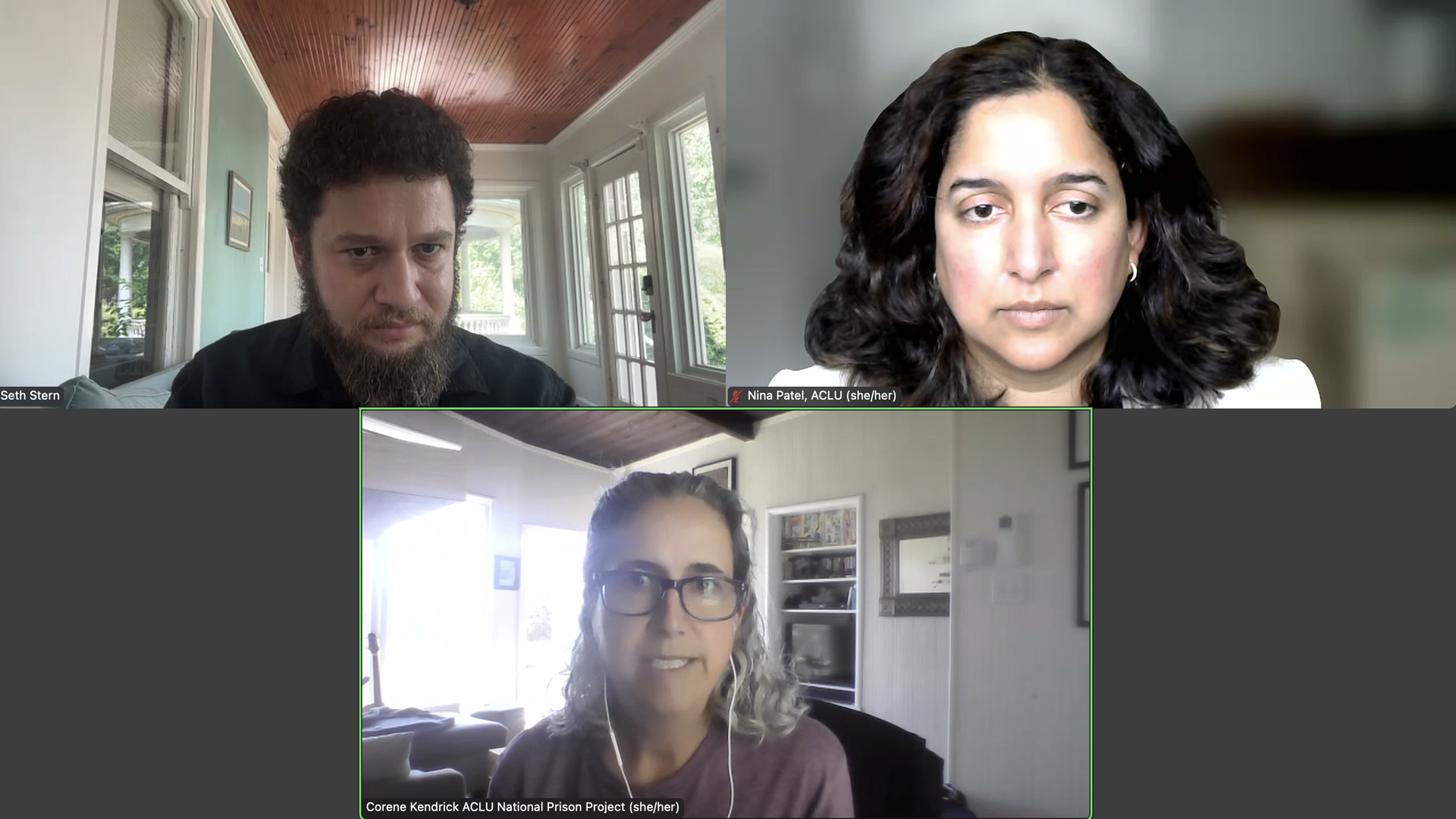These days the president of the United States files frivolous lawsuits at an alarming clip, including against news outlets that displease him. He’s far from the only prominent public figure abusing the federal court system in this way, steering scarce judicial resources away from meritorious lawsuits by ordinary people who have suffered serious damages.
And yet, Congress has not seen fit to pass a federal “anti-SLAPP” law to stop billionaires and politicians from pursuing strategic lawsuits against public participation. But powerless prisoners? That’s another story. If they want access to the federal courts they need to navigate the Prison Litigation Reform Act — a maze of onerous procedural requirements. It’s supposedly intended to stop the courts from being burdened by inmates’ frivolous lawsuits.
We held a webinar to discuss the PLRA’s impact on incarcerated journalists and the journalists on the outside who cover the prison system, featuring Jeremy Busby, a journalist and Freedom of the Press Foundation (FPF) columnist who is incarcerated in Texas, and American Civil Liberties Union attorneys Nina Patel and Corene Kendrick. Patel is senior policy counsel at the ACLU Justice Division and Kendrick is the deputy director of the ACLU’s National Prison Project.
As Kendrick explained, the PLRA originated as one of the Clinton administration’s “tough on crime” initiatives as it pivoted right in preparation for the 1996 presidential election. The law was enacted despite a lack of evidence that incarcerated people file baseless lawsuits any more frequently than anyone else, presidents or otherwise. She said the law “singles out one disfavored group of people and categorically denies them equal access to the courts.”
She described how the harm extends beyond the impacted litigants, as the kinds of court filings foreclosed by the PLRA are “oftentimes the best way that information about conditions in our nation’s prisons and jails reach the public and members of the media.”
“The PLRA has, in practice, served as a real barrier for journalists to get any sort of information” about facilities that “get billions and billions of dollars a year to lock up human beings,” Kendrick said. “The ability to communicate with the outside world is so circumscribed and is monitored and recorded. And you know, once something gets to a federal court and it’s filed on the docket, it is out there.”
But when the court dismisses a case for procedural reasons without any consideration of whether the claims are true, all journalists are left with are untested allegations that they rarely have the resources to corroborate. “That happens all the time, and unfortunately, and it adversely affects journalists greatly,” Kendrick said.
Lawsuits are also the only recourse available to incarcerated journalists, who often report relentless retaliation when their work upsets prison officials. That’s what happened to Busby when he helped expose deplorable conditions inside the prison where he was housed when the COVID-19 pandemic hit in 2020. Busby said he was transferred to four prisons, each overcrowded with people sick with COVID, before landing in a cell without a mattress or sheets, where he was kept for six weeks. His property was damaged or seized, and he was written bogus disciplinary charges that were later overturned.
He brought a federal lawsuit, but because he was retaliated against in four different prisons, the judge said the PLRA required four separate lawsuits in four different courts. “I wasn’t able to successfully keep up with four active litigations in four different courts in four different counties, from the solitary confinement cell that I was being held in,” Busby explained, resulting in his lawsuits each being dismissed on procedural grounds before the merits of his claims could be adjudicated.
Busby is a college graduate and accomplished writer — if he can’t navigate the PLRA, it is all the more difficult for an average member of the prison population to do so. Even the experienced lawyers on the webinar acknowledged how challenging it can be to comply with the PLRA when representing their incarcerated clients. Incarcerated litigants, Busby noted, must also pay court fees — in his case, a $400 fee became $1,600 when his lawsuit was split into four.
“You don’t get paid for work here in Texas, and so most guys, they don’t even want the $400 thing against their account because their family members can maybe send $20 for toothpaste and deodorant every month or so, or every two or three months, and they don’t want to sacrifice their deodorant and toothpaste money to pursue this lawsuit,” he said.
So what’s the point of the PLRA? As Patel noted, “The courts are well equipped to throw out lawsuits that are frivolous,” and do so every day in cases involving non-incarcerated people. Patel believes the real problem the PLRA is meant to address isn’t that incarcerated people file so many invalid claims — it’s that they file so many valid ones.
With around two million people incarcerated in the United States, “a functional system where someone can go to the courts and have their constitutional violations in prison litigated and then compensated would break most prison systems in this country,” Patel explained. “That is the dirty truth of the PLRA.”
She added, “Everyone knows, and it’s not a secret, that it would bankrupt the system, and it would break it, and that we couldn’t do what we do in this country, which is lead the world in mass incarceration.”
Watch the full webinar here, and subscribe to our newsletters to get notice of future events.
Note: FPF Advocacy Director Seth Stern, who authored this article and moderated the webinar, is on the board of Busby’s nonprofit organization, JoinJeremy.





